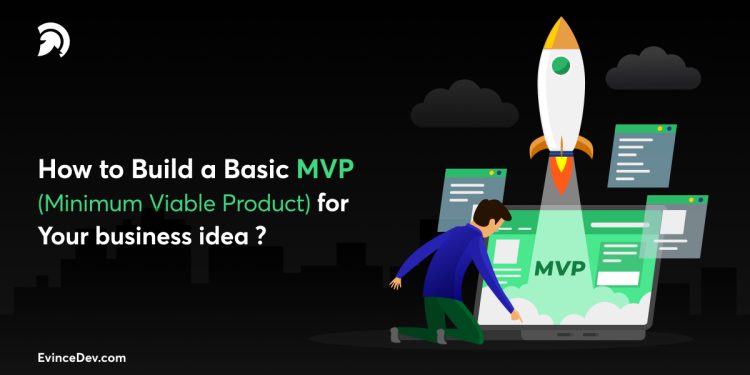Understanding what customers want from your product to flourish in the market. A minimum viable product has this impact on the business. The popularity of MVP validates your startup idea for adding features to your product and boosts your company’s overall performance.
As a result, this article primarily aims to provide an overview of what MVP stands for in software development & how to increase your chances of developing an MVP that benefits your business.
Developing a product, spending a lot of money, time, effort, best practices, and blood, only to fail is not anyone’s goal. The most challenging aspect of survival in this age of lean startups and organizations is that they are growing in the loom, and the level of competition is significantly rising. But is that the only clarification?
No.
Since most of you sell things customers don’t want, most of your products don’t grab attention and disappear from the market swiftly. And that’s where the idea of a minimum viable product plays a role.
What is MVP?
A minimum viable product is the first & foremost version of a product that contains only the required functionalities to give the core value and verify it with early customers. In short, MVP is used to gather input and determine whether people need the product.
Early adopters are encouraged to share their ideas for functionality so that product developers can better understand their target market’s requirements and preferences and make informed decisions about future upgrades.
Therefore, the MVP approach lowers the cost of development and the chance of financial failure by bringing an unfavorable product to market.
A minimum viable product (MVP) is the version of a new product that enables a team to get the most authentic learning about customers with the least amount of work.
It’s essential to remember that the MVP strategy is not about building a product to achieve a short-term goal. The method recommends creating the first, most basic product version available to a broad audience.
This version is constantly improved based on user feedback. The purpose of developing an MVP is to determine what features and experiences the product should provide to a particular group of people. An MVP may sometimes evaluate a product’s business strategy and monetization approaches.
What is the Purpose of MVP?
Creating an MVP is swiftly and inexpensively launching a product based on a proven idea. Businesses can gather customer input for the core product using MVP development solutions and incorporate it into subsequent revisions. Choosing the right audience, pulling ideas based on experience, and saving time are all possible with an MVP.
Stats Focusing on the Need to Develop an MVP
These statistics demonstrate the advantages of an MVP starting the new product development process.
- 29% of startups’ risk factors contribute to financial problems.
- Proper scaling allows startups to expand 20 times more quickly than premature scaling.
There are more reasons for an MVP product development to create a Minimum Viable Product, though:
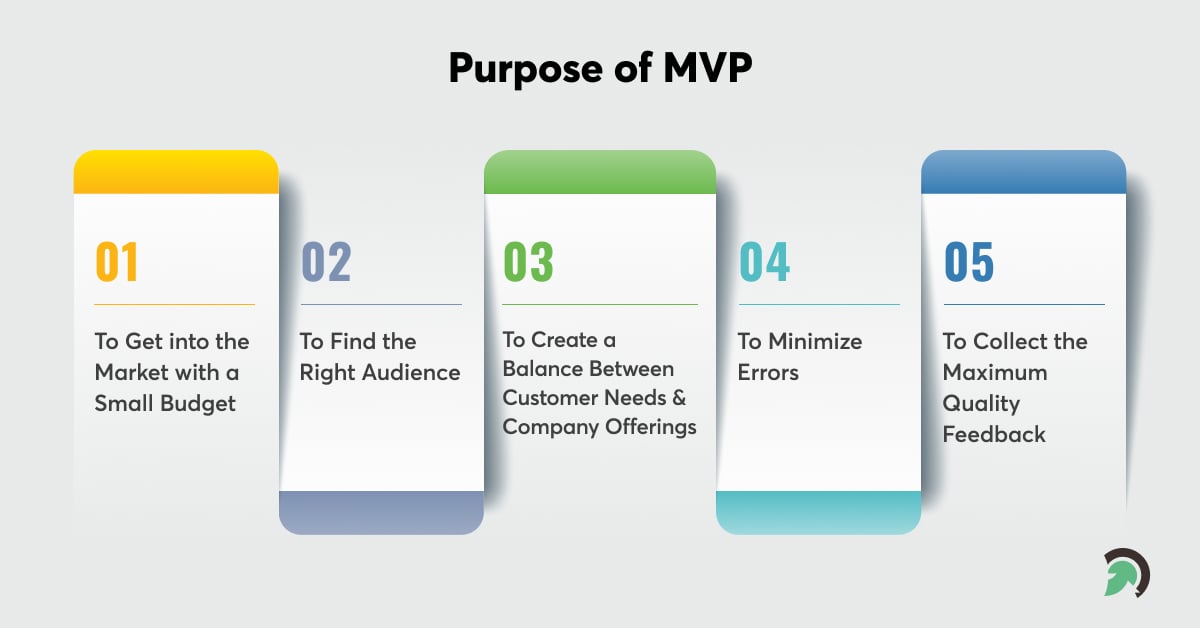
1. To Get into the Market with a Small Budget
Most new entrants to the market choose the MVP (Minimum Viable Product), and it is customary to launch a brand-new product with a modest budget. Therefore, even when they fail, they can still handle different situations by fixing any issues, flaws, or blunders later on without suffering a setback. Instead of releasing a full product, most businesses test their economic feasibility with an MVP.
2. To Find the Right Audience
It is the core purpose of MVP in business. Using the MVP concept, one may achieve their goals by creating solutions based on their knowledge and available time. Remember that you are planning for the early customers of your product.
3. To Create a Balance Between Customer Needs & Company Offerings
What if we ended up making a product that no one wanted? It’s a nightmare for business owners, entrepreneurs, and innovators. It is the reason why the company must provide the most viable product. It helps determine customer needs and drives businesses to find the right balance between what they are delivering and their client’s needs, whether through product improvement or the launch of something new.
4. To Minimize Errors
Another primary goal of MVP solutions for mobile or web applications in business is to test the product idea, which avoids the early-stage mistakes of agile development iterations. Ultimately, it reduces risk and quickens MVP software product development in any circumstance.
5. To Collect the Maximum Quality Feedback
Getting customer feedback is crucial for every business, particularly a new one. However, gathering positive feedback is usually challenging, and receiving feedback, even negative input, may sometimes be challenging. As a result, businesses prepare a minimum viable product that helps them target a particular user base and gather high-quality feedback and responses.
Difference between MVP and PoC
The MVP is not the same as a proof of concept. Depending on the industry, it might understand the latter differently.
First, a proof of concept is not a prototype for a finished product. A proof-of-concept (POC) in software development outlines procedures for determining if a software idea is technologically viable.
The team may also use this strategy to pick the best technologies for development and the essential scope of work, as well as to spot any potential technical issues and come up with fixes.
Dropbox’s founder, Drew Houston, created and narrated a video that explains how the service works. It received close to 75,000 new subscribers on its first night.
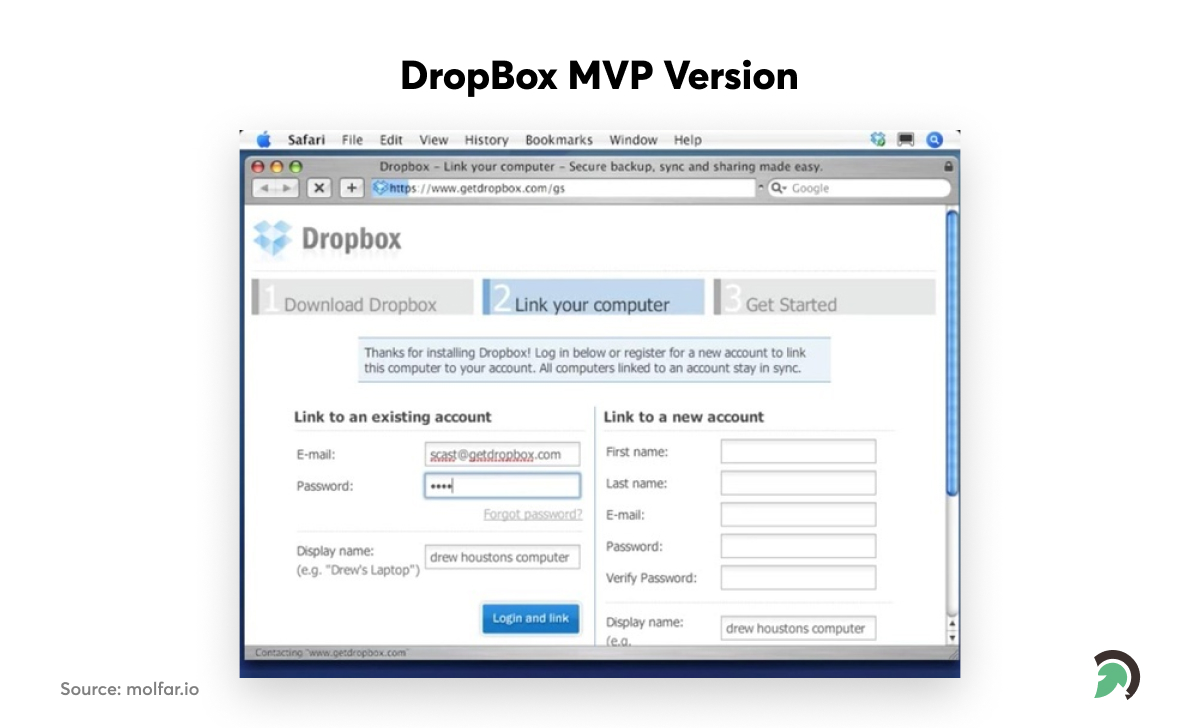
A blog can help implement a similar strategy, where you can discuss concepts for the product you wish to create with followers. We tend to consider this explanation a PoC, even if some consider it the MVP.
While there are connections between MVP and PoC, they are different. A minimum viable product is created when a proof of concept is optimally realized.
Now that you are familiar with the critical objectives of a minimum viable product. Let’s examine how to build a minimum viable product for the business plan canvas and lean startup.
Steps for Building MVP
The MVP is about putting your idea to the test, determining what will work to target your audience, and ensuring the MVP satisfies their demands. Before executing your idea into build MVP, you can validate your startup idea. Check our guide, which explains idea validation and how to evaluate a startup idea.
Finalizing and promoting the product can be easier if everything is done correctly. The following are the steps required to develop an MVP:
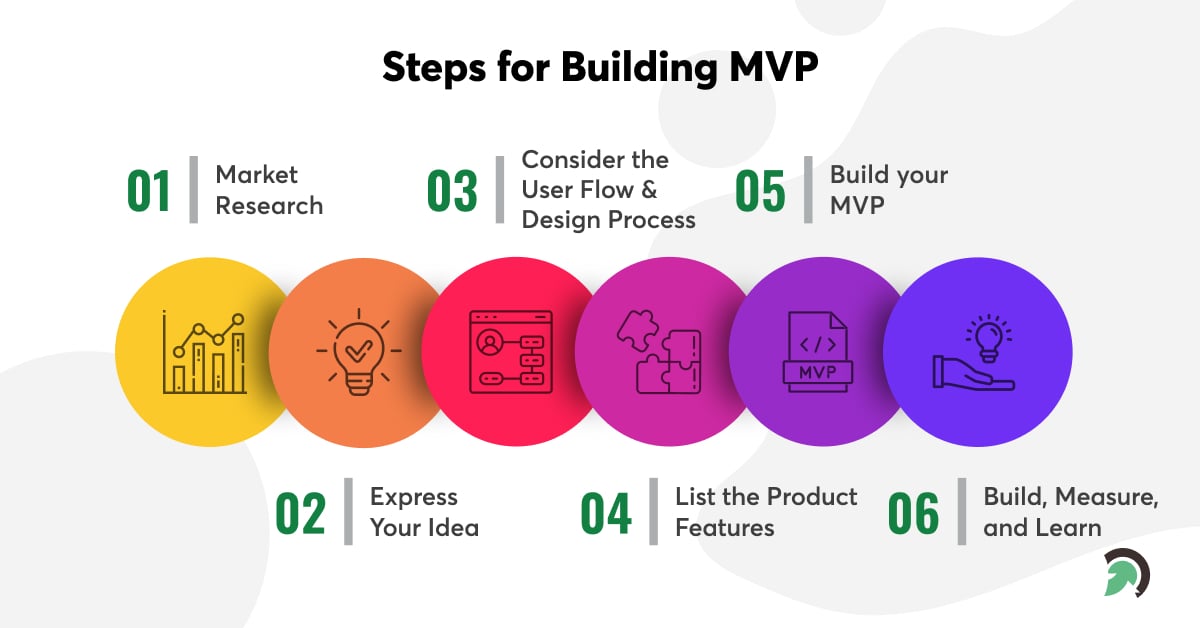
Step 1: Market Research
Sometimes, ideas do not meet the market demands. Ensure an idea fulfills the requirements of the targeted audience before implementing it. You should conduct surveys since the more data you have, the better your chances of success. Also, watch what the rivals are giving and see how you can make your proposal stand out.
Step 2: Express Your Idea
What benefits does your product provide for customers? Why would people purchase your product? To help you effectively convey your ideas, bear in mind these crucial questions.
Additionally, it would help if you were clear on your product’s critical estimates. As the MVP suggests, you should outline the customers you want to introduce value to before developing your MVP.
Step 3: Consider the User Flow & Design Process
User Flow Example: You must consider the application from the user’s point of view, from installing it through the last step, such as ordering or receiving anything. Additionally, user flow is critical since it ensures you don’t overlook anything while keeping the final product’s success and its users in mind.
You must outline the actions required to achieve the primary goal to create the process steps, which are essential to describe your user flow. Instead of emphasizing features like researching and purchasing the product, managing orders, and receiving orders, you should focus more on fundamental operations.
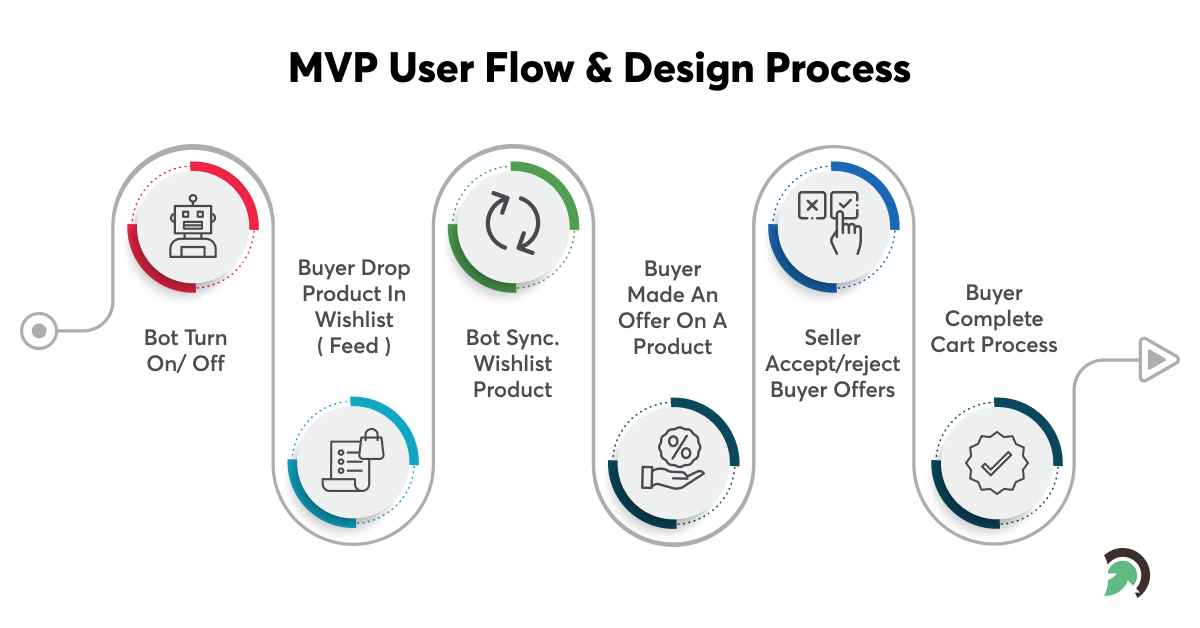
These are the objectives your product’s end users will have when they utilize it. It is time to outline each stage of the method and then identify its specific features.
Check-in detail Wireframe VS. Mockup VS. Prototype: When to use which for design?
Step 4: List the Product Features
Before developing the MVP, please list all the features you want to include. Once the building process is over, match it to the list. You must select the features after you have a list for each stage. Consider your users’ demands and determine whether you provide them with helpful things while selecting the features.
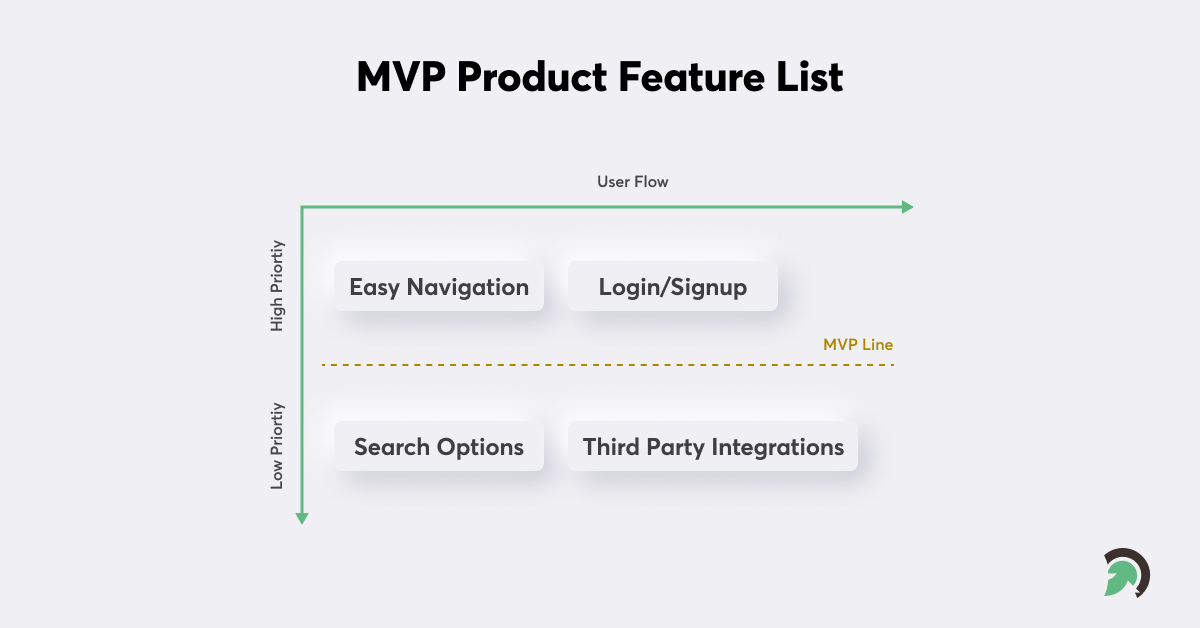
Next, classify each of the remaining traits into high, medium, and low-priority groups. After organizing all the features, you may decide on their scope for the initial product release and begin developing an MVP. You may also design an MVP prototype to see how your future product will seem.
Step 5: Build your MVP
You can develop your MVP once you’ve chosen the key features and identified the market demands. Remember that a prototype must still satisfy the demands of your customer and is not of inferior quality to a final product. As a result, it must be easy to use, engaging, & appropriate for your users.
Step 6: Build, Measure, and Learn
Everything is a step in a process: when the work’s scope is set, the product moves on to the development phase. The MVP product has to be tested when development is finished. The initial testing phase is carried out by quality assurance engineers, who work to enhance the product’s quality (even if it is not still launched).
After releasing the MVP, carefully review everything and gather feedback from your clients. With the help of customer feedback, you may decide whether the product is suitable for the market, whether it competes with other products, and so on.
You must understand that people inform us of the product’s flaws and unnecessary features. Once you have gathered customers’ feedback, you should start working on refining your product. After testing, you should learn from the experience and gauge the product’s quality.
What are the Benefits of Developing MVP
MVP development is essential since it may help pique user attention or safeguard your company from losses. Working with a reputable, viable product development company is essential for your project. Let’s discuss the benefits of MVP:

1. Initial Consumer Research
The sooner a product reaches the customer or end-user, the quicker you can gather and analyze their evaluations or feedback. You will benefit if you thoroughly comprehend the state of the market.
If the minimum marketable product does not find a consumer, you will still have enough room to reevaluate the entire concept and features because the codebase is very small.
However, if people get involved in your project, you can be assured that the features you created are helpful to end users. It indicates that you can continue or progress. The project might pause to minimize losses if the product doesn’t work out as planned.
2. The Testing Stage
Another benefit is that you can test your project’s accurate picture due to an MVP development service. It will be challenging to modify a mobile app for a specific audience later, for example, if it launches with decent features.
Furthermore, you may be obliged to remove unnecessary features that have already been paid for them. Additionally, when designing an MVP, you should only add a limited number of features.
Suppose these features later prove to be beneficial to your end users. In that case, you may proceed to modify them while making new, cutting-edge features that are primarily based on their preferences.
3. Cost Efficiency
Features-rich apps require years of complex development, and the cost will vary based on how much time the software development team invests in the project. Due to constant development, the MVP costs a little less.
Additionally, if your application starts to generate a profit, you can easily reinvest it in developing new features. Minimum Viable Product development solutions that suit your budget while still meeting your demands are a wise option.
4. Attracting Quality Investors
Some companies rely significantly on outside investors. Therefore, you must first pique their interest in your product to attract highly reputed investors. When you have a working product, your prospects of raising money are high, which is where MVP works perfectly.
Additionally, stakeholders won’t have to wait many months to get end-user feedback. Generally speaking, investors tend to be wary of ventures that, on paper, look fantastic but ultimately fail.
Therefore, an MVP can increase trust.
Having an MVP before diving headfirst into your market or sector might save your company from blunders previous businesses have made. Suppose your product doesn’t resonate with your targeted audience. In that case, you may reduce losses while generating & validating new startup ideas when working with a qualified and reputable minimum-viable product development company.
Read a detailed guide with fundraising stages and steps to gain investors’ trust. Find investors for your startup’s business;
Are You Looking for Help Building Your MVP?
Developing an agile minimum viable product (MVP) is more about research and strategy than development. Enterprises and businesses test their ideas and improve their strategies through their user base.
As you can see, it needs to be practical rather than flawless. Additionally, it allows you to learn a lot about your consumers with the help of a valuable tool without wasting time or money. Outlining the critical parts of MVP development and identifying your target market would be sufficient.
So no one can stop you from developing a great MVP if you have a strong business idea. Do you need guidance or assistance in creating an MVP for your project? Contact EvinceDev to get in touch.
Check how we helped the World’s Biggest Musical E-Commerce Marketplace, now acquired by ETSY at a staggering amount of USD 275 Million.
